Zhenya asked Pavel what they should do with the letter, and he replied, “Destroy it.” The destruction of the letter and documents, of course, makes it impossible to verify the story, as is the case with so many stories about the inscrutable Stalin.
As an adult, Svetlana always believed that Nadya committed suicide because she had concluded there was no way out. How could one hide from Stalin? Svetlana’s nanny later told her of overhearing Nadya’s conversation with a female friend just days before she committed suicide. Nadya said that “everything bored her, she was sick of everything, and nothing made her happy.” “What about the children?” the friend asked incredulously. “Everything, even the children,” Nadya replied. 35Such boredom was a sign of profound depression, but it was a painful account for her daughter to hear. Her mother had been “too bored.” Svetlana’s responses to her mother would always swing, unresolved, between sentimental idealizations and bitter anger.
Svetlana could not remember how or when she was told of her mother’s death or even who told her. She remembered the formal resting in state that began at 2:30 on November 9. The news of Nadya’s death had been shocking, and hundreds of thousands of Muscovites wanted to say good-bye to her, even though many were hearing her name for the first time. Stalin kept his family life very private.
Nadya’s open coffin rested in the assembly hall at the GUM; a huge building with atria, it housed government offices as well as the GUM department store. Irina Gogua remembered that the lines of people outside were so long that some of the uninitiated public wondered what the stores were giving away. 36Svetlana remembered that Zina, the wife of Uncle Sergo Ordzhonikidze, took her hand and led her up to the coffin, expecting her to kiss her mother’s cold face and say good-bye. Instead she screamed and drew back. 37That image of her mother in her coffin seared itself in her mind, never to be dislodged. She was rushed from the hall.
There are several versions of Stalin’s behavior at the ceremony. In one, he sobbed, and Vasili held his hand and said, “Don’t cry, Papa.” In another, Molotov, Polina’s husband, always recalled the image of Stalin approaching the coffin with tears running down his cheeks. “And he said so sadly, ‘I didn’t save her.’ I heard that and remembered it: ‘I didn’t save her.’” 38In Svetlana’s retelling, Stalin approached the casket and, suddenly incensed, shoved it, saying, “She went away as an enemy.” 39He abruptly turned his back on the body and left. Had Svetlana herself heard this? The anecdote sounds like retrospective invective and does not seem like the observation of a six-year-old in hysterics. Perhaps this was someone else’s story.
A cortege of marching soldiers accompanied the coffin carried on a draped gun carriage covered in flowers. Vasili walked with Stalin beside Nadya’s coffin in the procession to the Novodevichy Cemetery. Svetlana was not present.
Svetlana believed her father never visited her mother’s grave. “Not even once. He couldn’t. He thought my mother had left him as his personal enemy.” Yet there were stories from Stalin’s drivers of secret nocturnal visits to Nadya’s grave site, especially during the coming war. 40
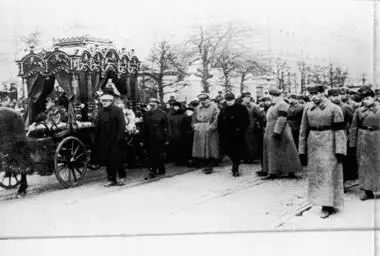
Mourners walk alongside Nadya’s coffin during the procession to Novodevichy Cemetery in November 1932. Vasili is the small boy in the front row. Svetlana was not present.
(Meryle Secrest Collection, Hoover Institution Archives, Stanford University)
Pravda reported Nadya’s death in a perfunctory manner, without explanation. Her suicide was a state secret, though everyone in the apparat knew about it. The children, along with the public, were told another story: Nadya had died of peritonitis after an attack of appendicitis.
It would be ten years before Svetlana learned the truth about her mother’s suicide. Though this might seem astounding, it is entirely credible. The terror that Stalin had begun to spread around him particularly infected those closest to him. Who would dare tell Stalin’s daughter that her mother had committed suicide? Many would be shot simply for knowing the truth. It soon became “bad form” even to mention Nadya’s name.
Stalin was clearly shocked by Nadya’s death, but he got over it. He wrote to his mother:
MARCH 24, 1934
Greetings Mother dear,
I got the jam, the ginger and the chukhcheli [Georgian candy]. The children are very pleased and send you their thanks. I am well, so don’t worry about me. I can endure my destiny. I don’t know whether or not you need money. I’m sending you 500 rubles just in case. . . .
Keep well dear Mother and keep your spirits up. A kiss.
Your son,
Soso
P.S. The children bow to you. After Nadya’s death, my private life has been very hard, but a strong man must always be valiant. 41
But for very young children the scars caused by a parent’s death are profound, in part because death is not something their young minds can grasp; they understand only abandonment. Svetlana’s adopted brother, Artyom Sergeev, remembered Svetlana’s seventh birthday party, four months after her mother’s death. Everyone brought birthday presents. Still not sure what death meant, Svetlana asked, “What did Mommy send me from Germany?” 42But she was afraid to sleep alone in the dark.
A childhood friend, seven-year-old Marfa Peshkova, granddaughter of the famous writer Maxim Gorky, remembered visiting Svetlana after Nadya’s death. Svetlana was playing with her dolls. There were scraps of black fabric all over the floor. She was trying to dress her dolls in the black fabric and told Marfa, “It’s Mommy’s dress. Mommy died and I want my dolls to be wearing Mommy’s dress.” 43
Конец ознакомительного фрагмента.
Текст предоставлен ООО «ЛитРес».
Прочитайте эту книгу целиком, купив полную легальную версию на ЛитРес.
Безопасно оплатить книгу можно банковской картой Visa, MasterCard, Maestro, со счета мобильного телефона, с платежного терминала, в салоне МТС или Связной, через PayPal, WebMoney, Яндекс.Деньги, QIWI Кошелек, бонусными картами или другим удобным Вам способом.
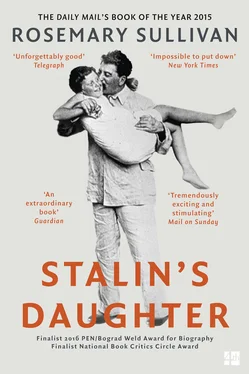

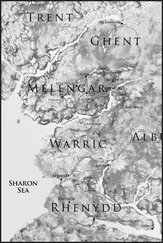


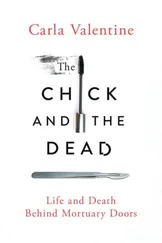



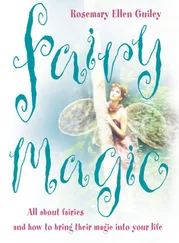


![John Bruce - The Lettsomian Lectures on Diseases and Disorders of the Heart and Arteries in Middle and Advanced Life [1900-1901]](/books/749387/john-bruce-the-lettsomian-lectures-on-diseases-and-disorders-of-the-heart-and-arteries-in-middle-and-advanced-life-1900-1901-thumb.webp)
